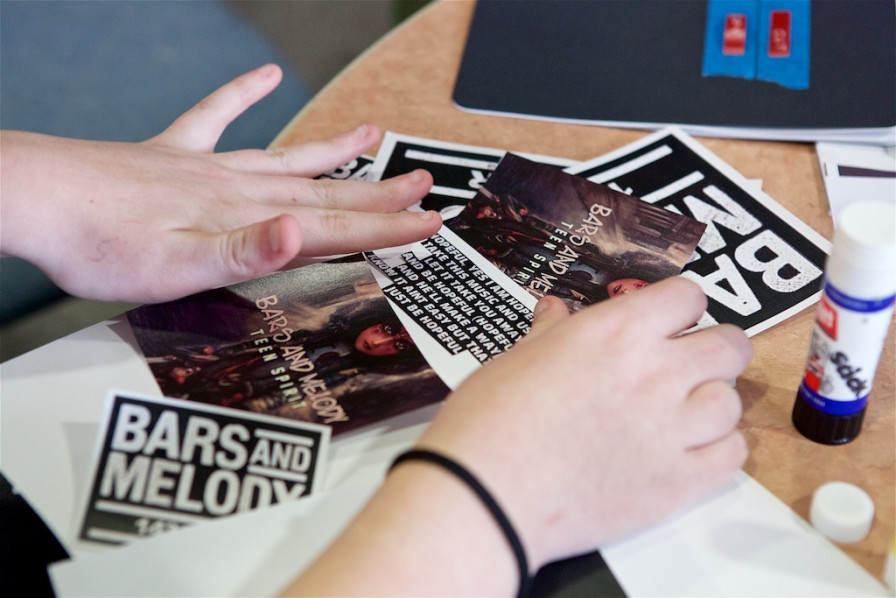Fanzines, photography and Arts Award.

As Project Co-ordinator for Exchanging Notes Hartlepool I’m always looking for ways to broaden young people’s horizons. Something else I look for is new approaches to Arts Award. I have some work that I’d like to share that has achieved both of these aims.
Young people have worked with a graphic designer and a performance photographer exploring art forms that have strong links with music through the music industry and the subcultures surrounding bands and pop music.
We planned fanzine workshops led by a graphic designer to look at the culture of fans that surround bands and musicians whilst undertaking Arts Award Bronze Part C – “Arts Inspiration”.
Before I go any further, for those who don’t know here’s the wiki definition of a fanzine;
A fanzine (blend of fan and magazine or -zine) is a nonprofessional and nonofficial publication produced by fans of a particular cultural phenomenon (such as a literary or musical genre) for the pleasure of others who share their interest.
So we explored visual styles, text and fonts, binding and production techniques, old school zerox and photocopying, content such as top 10 favourites, best venues, gig reviews, it goes on! Fanzines are such a rich subject matter and that’s just the music based zines never mind film, TV and yes shed fanzines!
Part C of the Bronze Arts Award – “Arts Inspiration” involves young people researching an artist (band, film director, choreographer, illustrator etc.) and creating a summary of what they find out. To achieve this, our young people created several zine templates using different materials, binding and folding techniques. Next they researched their favourite band and gathered images and information to print, cut and paste as material for their zines. Finally they wrote the experience up in their log books. The zines will be displayed during the Arts Award Moderation as the “summary of my research”.
Fanzines are really accessible to young people who may be put off by the idea of writing or who don’t feel confident in their arts and craft skills – you don’t need to be an artist to cut and paste. Having a product to work towards is also a good way of engaging young people in a research based activity which may seem daunting at first.
We spent an hour with a performance photographer; he outlined his career, gave a presentation that demonstrated the breadth of performance photography from young people’s performances in similar projects to international artists and bands. We looked at images that captured stage presence, the mood of the performers and audience responses. The images showed a diverse range of performers from different cultural backgrounds and musical genres. Young people then worked as a team to photograph musical instruments as a still life, taking on roles such as camera operator, lighting operator and director. Although young people found this daunting at first “this is complicated” they came up with some creative ideas and produced some interesting images “this is fun I like this”.
These experiences have given young people a broader understanding of music and pop culture; have helped to contextualise the overlaps that naturally occur between art forms whilst giving young people the opportunity to consider the industry side of their interests. We’ve also completed some arts award sections along the way!
Not everyone is fortunate enough to have the resources to bring in graphic designers and photographers, this really did enrich our experience but it would be possible to look into the photographic element of the music industry or to create fanzines with young people in a more simplified way, this would still broaden horizons and help achieve Part C.
I hope this is useful for other practitioners.
Tim Coyte
Exchanging Notes Project Co-ordinator, Hartlepool

